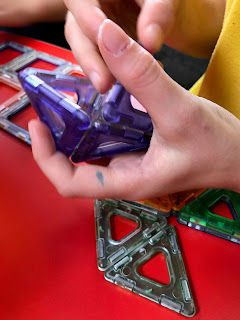Thursday, 27 April 2017
Tuesday, 11 April 2017
Rostrum 2017
Rostrum (Public Speaking) Years 3 - 6
This year’s topics are:
A quiet achiever
Australia Day
The year of the rooster
I love it when...
Heatwaves
Transport 50 years from today
Your speech needs to be 3 minutes.
HINTS TO HELP:
- Choose a topic that you will enjoy speaking about.
- Write out your speech. You might get a point or two from what you know or your own experience, and you might consult, for instance, the library. You will find you don't need many points, just one or two with examples or explanations.
- Time yourself and, if possible, record your speech. (The competition speeches are for three minutes and you should time your speech to within 30 seconds either side of that limit.)
- Remember to start your speech by addressing the Chair "Mr or Madam Chairman" or "Chairperson".
- Have an opening that is "attention grabbing". There are several ways of doing this - sometimes a short quotation that leads into the topic might be used, or pose a question to the audience. Try to end with a "punch-line" that your audience will take away with them.
- Read your speech through several times so that you have a good idea what to say, but don't try to memorise it word for word.
- Put down headings (memory joggers) on little note cards if you think you need them (palm cards).
- Speak out so that you can be easily heard. Don't speak too fast.
- Please don't read your speech to the audience.
- It's best not to use "props" (for example, a toy dinosaur). The audience may become more interested in the "prop" than your speech.
Students are encouraged to bring their speeches on palm cards to school and practise during our Readers’ Workshops throughout Weeks 1- 3. Students will begin presenting speeches in Week 2 Term 2.
To view the top speeches from 2014 go to the following link:
Friday, 7 April 2017
Smooth Moves - Forces
In Science, we have been investigating the different forces used when performing tasks with every day items. We have also been exploring friction involving different surfaces. We have been using large force arrows to show when big amounts of force are needed/present and small force arrows to show when small amounts of force are needed/present.
Take a look at us exploring friction by experimenting pushing a box across different surfaces.
We also looked at a range of forces including pushes, pulls, friction and gravity when using everyday items.
What forces can you see in our photos?
Sunday, 2 April 2017
Smooth Moves - Games Galore
Our Science inquiry, Smooth Moves, provides students with the opportunity to explore forces and motion.
Through hands-on activities students identify forces that act at a distance and those that act in direct contact and investigate how different-sized forces affect the movement of objects.
They will explore why balls roll? Why apples fall from trees? Why some things slide across ice but not on carpet? What makes our bikes stop when we brake? We will explore all types of forces including friction, gravity and pushes and pulls when we exercise, ride bicycles and drive cars.
This week, one of our experiments was to explore the forces present when playing a range of everyday games.
Through hands-on activities students identify forces that act at a distance and those that act in direct contact and investigate how different-sized forces affect the movement of objects.
They will explore why balls roll? Why apples fall from trees? Why some things slide across ice but not on carpet? What makes our bikes stop when we brake? We will explore all types of forces including friction, gravity and pushes and pulls when we exercise, ride bicycles and drive cars.
This week, one of our experiments was to explore the forces present when playing a range of everyday games.
Can you see all the forces at play?
Subscribe to:
Posts (Atom)



















